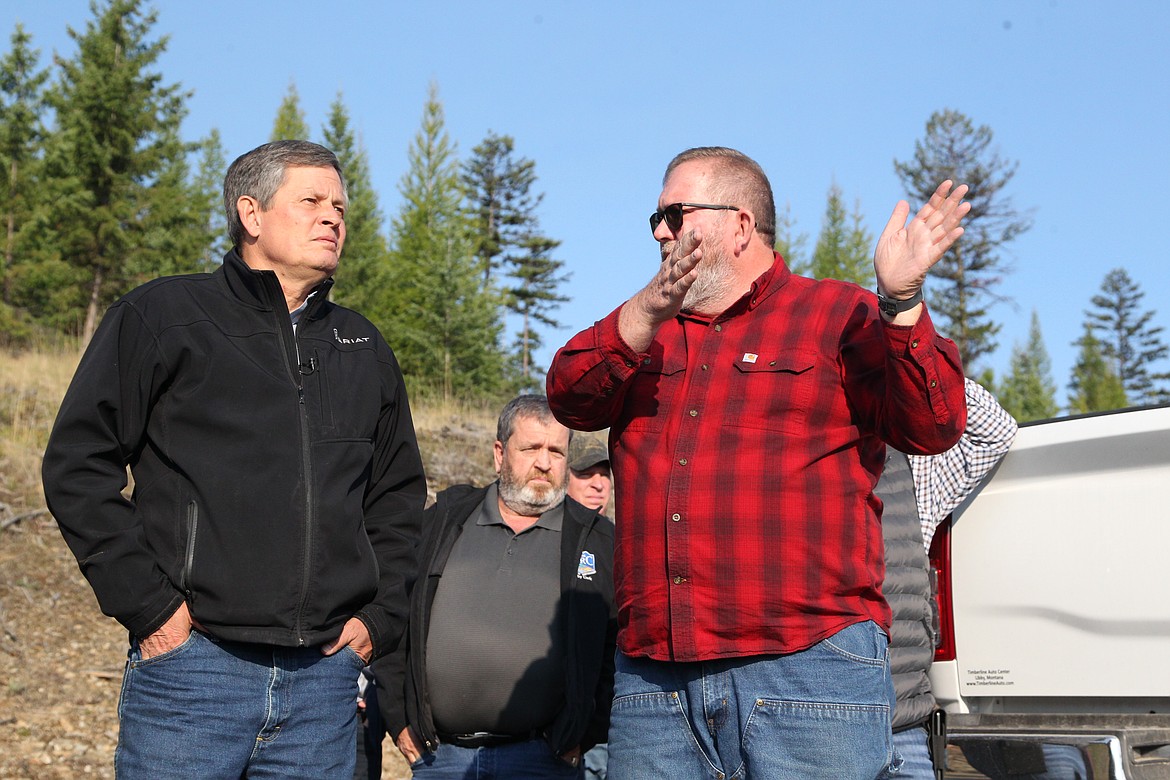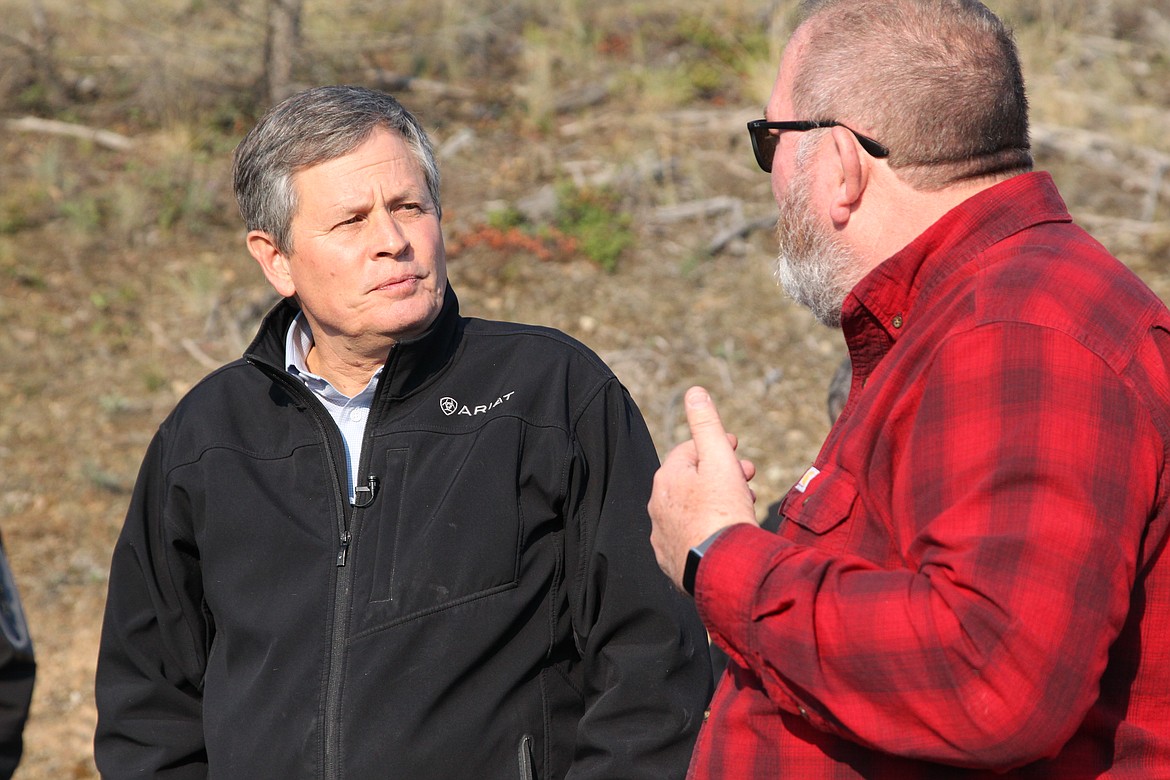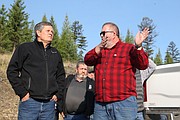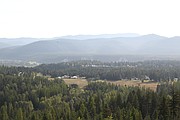Daines endorses fiberboard plant, forest management in Libby trip
U.S. Sen. Steve Daines voiced support for local forest management projects and endorsed plans to bring a wood processing plant to Libby during a visit earlier this week.
Pointing to the devastation wrought by this year’s wildland fire season, Daines, a Republican, described treating forest fuels as a fundamental public safety issue.
“We’re behind Lincoln County 100 percent,” he said.
Local officials who accompanied Daines on his Aug. 30 tour noted the setbacks facing several management projects in the area. Mark Peck, shared stewardship coordinator with the Lincoln County Port Authority, cited an impending legal suit against the Ripley Project, a U.S. Forest Service treatment effort located east of Libby and U.S. Highway 2, as one of the latest hurdles.
Mike Garrity, executive director with Alliance for the Wild Rockies, announced his organization’s intent to sue the U.S. Forest Service over the project due to the effect it could have on the Cabinet-Yaak grizzly bear habitat.
In an editorial published in newspapers earlier this week, Garrity argued that the increase in road density called for by the project could keep grizzly bears out of the area for at least the next 25 years, further isolating the population of local bears.
Peck and other officials argued that most of Lincoln County would have to be a protected zone for bears under Garrity’s assessment of imperiling road density. Residents have spotted grizzlies throughout the area, including on the Cabinet View Golf Course.
“They could be anywhere out here,” said Chad Benson, Forest Service supervisor of the Kootenai National Forest.
Peck called for drawing a line in the sand with the Ripley Project, worrying that litigation against similar management efforts could slow fuel reduction work near Libby, and other residential areas of the county.
The Ripley Project would include almost 5,000 acres of vegetation treatment in the Wildland Urban Interface, a transition zone between developed land and wilderness where wildfire risks are most pronounced, according to an environmental assessment on the project.
Local officials noted that treatment efforts spearheaded by the Forest Service, state Department of Natural Resources and Conservation and the county had reduced the threat of wildfire in parts of the county, such as the Flower Creek area, but that much work remained to be done.
Last year, DNRC determined Lincoln County had the most acres at risk of fire and forest degradation out of any county in the state. DNRC also counts Lincoln County as having one of the highest percentages of structures and critical infrastructure at very high or extreme risk from wildfire.
While 400 million board feet worth of timber harvests were tied up in litigation in Forest Service Region One, which includes Montana, Daines said he was seeing more support from politicians in western states for forest management.
“It’s an opportunity and we have to capitalize on it,” he said.
Daines said provisions from an Emergency Wildfire and Public Safety Act he co-sponsored and wildland firefighter pay increases he had backed were included in the $1 trillion infrastructure bill passed by the Senate in August. Daines voted against the infrastructure bill arguing it would increase the national debt.
Forest Service officials have a series of local projects — including Ripley, Purple Martin, Black Ram and Pinkham Meadows — in the works. County officials in partnership with private landowners, the Forest Service and DNRC, received funding for the Rabbit Tracts project, an effort that would manage 29,976 acres northwest of Troy earlier this year.
In conjunction with forest management work, local officials hope to break ground on a medium-density fiberboard plant that could process some of the byproducts of fuel reduction projects. This arrangement, according to Peck, would align the management needs of the forest with local mill capacity.
Bruce Vincent, of Montana-based Environomics, argued that the project would help sequester carbon in fiberboards that foresters would otherwise release into the atmosphere when burning slash piles.
Daines voiced his support for the project, calling it a benefit for both the environment and the local economy. Peck previously said the plant could create between 150 and 200 jobs.
Daines said he was working to give states more leeway on how they could spend funds from the American Rescue Plan Act which could help ease the cost associated with the project — a significant hurdle facing local officials and their private partners.







